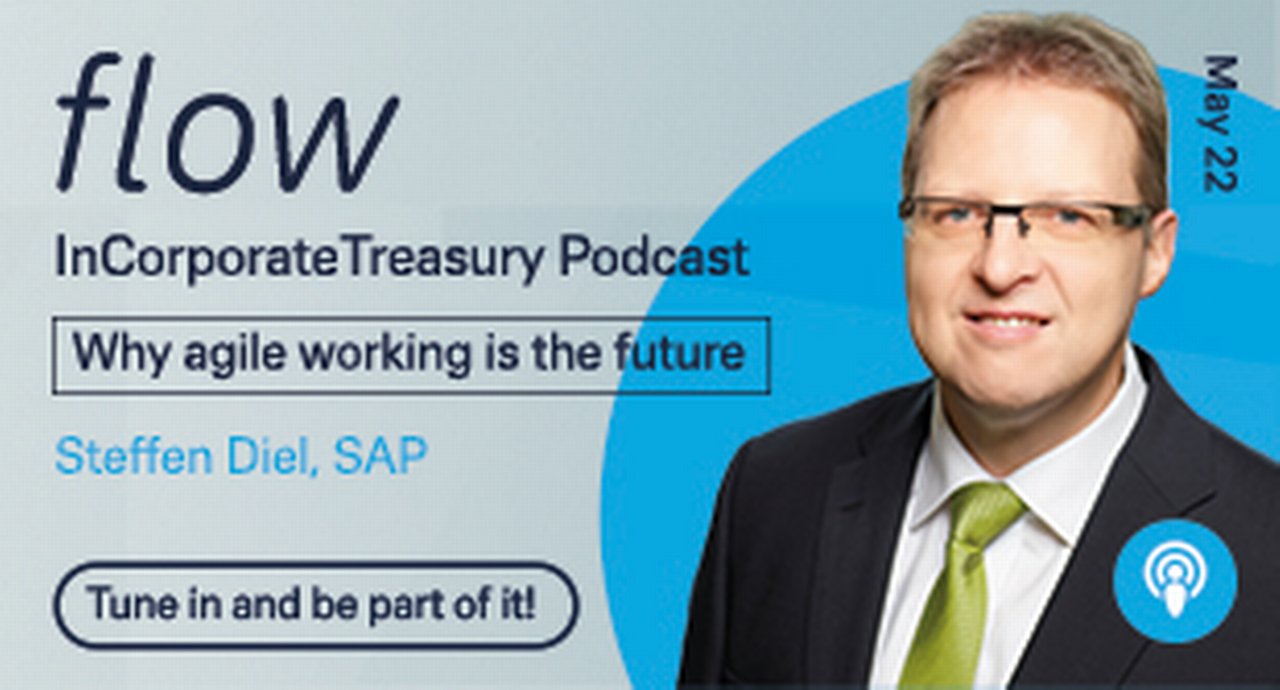28 June 2022
Driving treasury automation has taken on added urgency since Covid-19. flow’s Desiree Buchholz and Helen Sanders look at how the pandemic has altered priorities, why implementing new solutions takes time and how working with fintechs can help to accelerate the process
MINUTES min read
Flashback to early 2020: As the Covid-19 pandemic struck, it not only spelt disaster for people’s lives and the global economy, but it marked an inflection point for the corporate treasury community: Manual and paper-based processes, as well as treasury systems accessible only on specific workstations immediately became obsolete. Companies had only days to introduce digital signatures, improve controls over processes and enhance fraud prevention measures to maintain business resilience in the new working from home environment.
While cash visibility has always been a top priority for corporate treasurers, transparency and ensuring that cash was used efficiently throughout the company grew in importance. Treasurers had to ensure their companies had enough liquidity to withstand repeated lockdowns, supply chain disruptions and reduced demand from customers.
Now, two- and-a- half years into the pandemic, it’s time for assessment. To what extent have companies made progress on treasury centralisation? What challenges remain when it comes to process automation and how can partnerships between banks and fintechs help to address these going forward?
Treasurers want to spend more time on technology
First, it can be said the often-quoted observation that the pandemic has accelerated digitalisation is now supported by data: According to the Association of Corporate Treasurers’ (ACT) recent Business of Treasury 2022 report1, which canvassed the views of more than 180 treasurers worldwide, 66% of respondents said that the pandemic has increased the adoption of new technology, compared with 55% in the 2021 survey (see Figure 1). This year, in 2022, the same percentage expect to spend more time on technology, up from 58% last year.

Figure 1: Impact of pandemic on corporate treasurers
Source: ACT survey, Business of Treasury 2022 report
"The pandemic was a wake-up call for many treasurers but ensuring visibility over and access to cash is now more relevant than ever"
In fact, the urgency of driving treasury automation projects has not gone away, the priorities that emerged in 2020 have since become more, rather than less important. “The pandemic was a wake-up call for many treasurers but ensuring visibility over and access to cash is now more relevant than ever,” says Dirk Kronshage, Head of Treasury Automation Services at Deutsche Bank Corporate Bank.
Globally, companies are facing supply chain disruptions due to a combination of the war in Ukraine, sanctions against Russia and ongoing Covid restrictions in China which, in turn, affects the need for working capital and liquidity. Kronshage observes “Accessing cash in regulated markets has gained heightened importance for many of our clients who are looking for solutions to free up cash in emerging markets.” Colleague Parvathy Ramachandran, Director Cash Management Corporate Treasury Services at Deutsche Bank, adds that “we see an increase in the number of questions around bank account rationalisation and centralisation,” as a result.
Consolidating the number of banks and bank accounts a company works with is a prerequisite to further centralising, standardising and automating treasury processes. An October 2021 survey of 200 companies conducted by Deutsche Bank with the ACT found that most respondents still have room for improvement, with 80% stating they have between five and nine (49%) or 10–19 (31%) core cash management banks. In Europe, 35% of respondents operate with more than 100 bank accounts.2
"Improving automation is not a ‘one- off’ exercise, it’s an ongoing task for the treasury function to free up time"
Yet, Ramachandran admits that it takes time for treasurers to automate processes end to end. “Improving automation is not a ‘one- off’ exercise, it’s an ongoing task for the treasury function to free up time to be able to concentrate on more strategic activities and business partnering, particularly as we enter a period of renewed geopolitical and economic uncertainty.”
Centralisation is key for automation
Technology, which helps to drive automation, has always gone hand-in-hand with treasury. New solutions developed by banks and fintechs now offer a growing range of easily accessible opportunities to solve problems and enable treasurers to support the business in new ways. These opportunities are not restricted to the largest treasuries. Tools and capabilities that were often out of reach for many smaller and mid-sized companies are now more cost-effective and accessible, with scalable pricing, cloud-based and software-as-a-service (SaaS) models, and rapid onboarding becoming an industry norm.
These new services also help MNCs: for example, recently a major international retailer implemented Deutsche Bank’s “in-house banking as a service” (IHBaaS)3, to expand the reach of its existing in-house bank to as many group subsidiaries as possible. “The goals of the company were to rationalise bank accounts, standardise cash management processes, harmonise treasury reporting and get better control on fees,” Ramachandran recalls. The Deutsche Bank solution works by complementing an existing IT infrastructure with multiple enterprise resource planning (ERP) interfaces and incorporates a complex payment and collection on behalf of (POBO/COBO) as well as virtual account structure.
What to automate and where to start
A plethora of tools is available to automate treasury processes, from bank connectivity and file formatting through to cash flow forecasting and data analytics, in-house banking, bank account management, receivables reconciliation and fraud prevention. The multiple choice can appear bewildering, particularly given the number of vendors in the market, but as the financial technology industry evolves and matures, it is becoming simpler to identify and access new capabilities.
Some treasurers will still seek out and implement specialist tools to complement their treasury management system (TMS), enterprise resource planning (ERP) and/or banking systems. However, TMS and ERP vendors have either developed or acquired specialist capabilities to support automated processes and better decision-making – or partnered with other vendors to do so.
Like many of its peers Deutsche Bank has an active programme to engage with established and emerging fintechs to offer integrated capabilities, such as cash flow forecasting and receivables reconciliation, alongside their banking solutions. “These bank-fintech-partnerships allow companies to access fintech solutions quicker and with a higher level of comfort as we have done our own due diligence,” explains Deutsche Bank’s Ramachandran.
So, the question for treasurers is not what they can automate, but what activity they should address first. Typically, automation priorities are driven by a problem statement such as: What tasks take up the most time or resource? Which processes are most prone to error, omission or at risk of fraud? What activities is treasury seeking to undertake that it cannot support through its existing resource base?
Automation in practice
Accurate, timely cash flow forecasting has been a particularly long-standing challenge for treasurers, and typically heads the priority list in industry surveys. “Data is often held by multiple teams across the business, who use different systems to produce files in disparate formats,” says Kronshage. As collating this data often takes time and manual effort, by the time this process is complete the report itself may be only of limited value.
Deutsche Bank is currently working with technology partners to deliver a cloud-based, SaaS solution that supports decision making. The solution offers real-time visibility over bank transactions and even goes beyond cash flow forecasting (see Figure 2) as the aim is to use predictive analytics and AI models to optimise corporate processes. The solution extracts data from clients’ ERP and TMS and combines this with bank data and third-party data vendors on a single platform, with a sophisticated analytics layer to provide, e.g. working capital optimisation, FX hedging recommendations, end-of-day liquidity forecasting and performance against environmental, social and governance (ESG) metrics.

Figure 2: Automated decision making in corporate treasury
Source: Deutsche Bank
Receivables reconciliation for invoicing has until now often been a manual or semi-manual process, which has been less of a problem when reconciling a low volume of high value transactions. As companies embrace direct-to-consumer (D2C) business models, this cash flow dynamic shifts from large wholesaler and distributor payments to a high volume of small and micro-payments. These need to be reconciled immediately to enable real-time fulfilment and uninterrupted service delivery.
This creates a need for tools to automate the reconciliation process, often using AI and ML to develop intelligent matching rules. For example, Deutsche Bank has worked with an external fintech provider to leverage their service offering for an integrated, rule-based auto-matching capability (see Figure 3). This combines multiple payment methods and data sources, automates file conversion and optimisation for import into ERPs, and provides an intelligent, ML-based matching engine. It offers treasurers a complete, timely and accurate view of reconciled cash flows to manage liquidity, while business teams can provide customers with uninterrupted access to products and services.

Figure 3: Rule based auto reconciliation
Source: Deutsche Bank
Continuing on the digital pathway
Digitisation and optimisation of treasury processes and decision-making is a continually evolving process, as new solutions and opportunities emerge in line with technology developments and changing business requirements.
Some newer technologies, including blockchain and distributed ledger (DLT), have the potential to transform the way that treasury processes and transactions are conducted, in particular when exploiting their potential beyond the finance department, i.e. when coupled with an enterprise’s sourcing and distribution value chains. Although not yet prevalent in the treasury space, blockchain-based solutions – such as smart contracts – are maturing.
Over time, these technologies that complement AI, ML and API-based connectivity will become more widespread, with the potential for real-time, transparent processes and transactions making the borderlines between finance, procurement and fulfilment processes less rigid than before. By working with their banks and technology partners, and staying aware of new fintech opportunities, treasurers can further streamline and enhance the efficiency of their operations and quality of decision-making and become an ever more valued partner to the business.
Sources
1 See https://bit.ly/3QQSoi8 at treasurers.org
2 See Treasurer’s checklist: How to improve cash management in five steps at flow.db.com
3 See Doing more with less at flow.db.com
Cash management solutions Explore more
Find out more about our Cash management solutions
Stay up-to-date with
Sign-up flow newsbites
Choose your preferred banking topics and we will send you updated emails based on your selection
Sign-up Sign-upSubscribe Subscribe to our magazine
flow magazine is published annually and can be read online and delivered to your door in print
You might be interested in
CASH MANAGEMENT
Treasurer’s checklist: How to improve cash management in five steps Treasurer’s checklist: How to improve cash management in five steps
Best practice is something every treasurer strives for but getting there is a tough task. Drawing on the results of a benchmark review among 200 corporate treasurers globally, flow outlines five steps that will help to improve cash management
flow case studies, Cash management, Technology
Trip.com’s journey towards a digital treasury Trip.com’s journey towards a digital treasury
The Shanghai-based travel platform Trip.com aims to regain its pre-pandemic growth path. Head of treasury Xuelin Chen tells flow’s Desirée Buchholz about the challenges this creates for her department – and how a project with Deutsche Bank offers both standardisation and digitisation
PODCAST
Why agile working is the future Why agile working is the future
Extreme events are getting more frequent. On this backdrop, being flexible and reacting quickly to new market conditions has become a key driver for a successful treasury. But what does agile working actually mean for treasury departments and how can your organisation get there?



